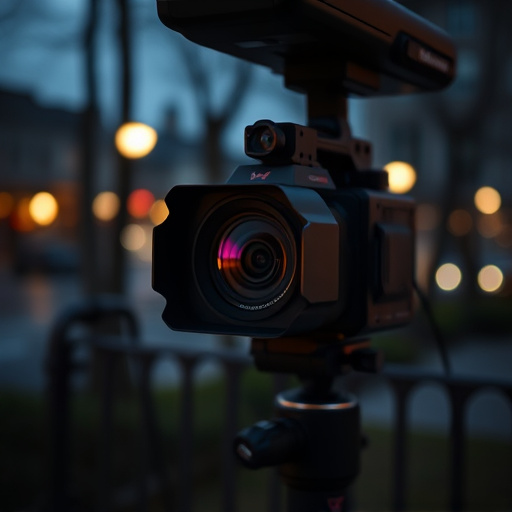Strategically placing most realistic looking security decoys, including advanced cameras, mannequins, and data simulations, misleads surveillants by creating false impressions of omnipresent surveillance, deterring observation and enhancing safety for sensitive operations in today's digital landscape. Professionals must be trained to uncover threats posed by these decoys through simulated environment analyses.
“In an era where surveillance is ubiquitous, counter-surveillance techniques are crucial for professionals seeking to protect sensitive information and individuals in high-risk environments. This comprehensive guide delves into the art of creating an impenetrable shield against physical and digital eyes. From strategically placing realistic security decoys that mimic authentic activity to employing advanced cameras with stealth capabilities, we explore innovative methods. Additionally, we uncover digital deception tactics, emphasize threat training, and provide insights on navigating the complex landscape of modern surveillance.”
- Strategizing with Realistic Decoy Placement
- Advanced Security Cameras: Mimicry and Stealth
- Countering Physical Surveillance with Obscurity
- Digital Deception: Hacking Your Defender's Defenses
- Training for Uncovering Hidden Threats
Strategizing with Realistic Decoy Placement
When strategizing a counter surveillance sweep, one of the most effective tactics is realistic decoy placement. The use of high-fidelity security decoys can mislead potential surveillants by creating false impressions and diverting their attention from actual targets. Professional teams should carefully select locations for these decoys, considering factors such as lighting, terrain, and existing structures to ensure they blend seamlessly into the environment.
The key to success lies in choosing the most realistic-looking security decoys available. These can include replicas of real equipment like cameras, sensors, or even fake personnel. By integrating these decoys into the sweep area, professionals can create a complex and unpredictable landscape that makes it increasingly difficult for surveillants to identify genuine threats, enhancing the overall effectiveness of the counter surveillance operation.
Advanced Security Cameras: Mimicry and Stealth
In the realm of counter surveillance, one of the most innovative tools at a professional’s disposal are advanced security cameras designed for stealth and mimicry. These devices have evolved far beyond simple video recorders; they now resemble everyday objects so convincingly that they can blend seamlessly into any environment. From weather-resistant decoys resembling streetlights to hidden cameras disguised as power outlets or even plants, these tools offer unparalleled realism.
The use of the most realistic-looking security decoys allows professionals to create an illusion of omnipresent surveillance, deterring potential surveillants from targeting their assets. By strategically placing these advanced cameras, individuals and organizations can protect sensitive areas while maintaining a sense of normalcy, making it significantly harder for unauthorized observers to gather intelligence or conduct covert operations undetected.
Countering Physical Surveillance with Obscurity
Surveillance countermeasures often involve more than just technical solutions; physical obscurity is a powerful tool in an expert’s arsenal. When it comes to deterring human observation, the key lies in creating an environment that blends seamlessly with its surroundings, making it difficult for prying eyes to discern genuine from deceptive elements. This is where high-quality security decoys come into play, offering the most realistic looking alternatives to real equipment or personnel.
By strategically placing lifelike mannequins, fake cameras, and other replica devices, professionals can confuse and misdirect potential surveillants. These decoys must be meticulously designed and positioned to mimic genuine activities, such as a security guard patrolling an area or a surveillance camera capturing footage. The goal is to create a realistic illusion that discourages observation and deters unwanted attention, ensuring the safety and privacy of sensitive operations.
Digital Deception: Hacking Your Defender's Defenses
In today’s digital era, counter surveillance sweeps require innovative and sophisticated methods to outsmart advanced defense systems. One powerful technique gaining traction is digital deception, where professionals deploy highly realistic security decoys to mislead potential threats. These decoys go beyond mere fake data; they involve creating intricate, convincing simulations of actual network activity. By mimicking legitimate user behaviors and system responses, these decoys become the ultimate red herrings, luring intruders away from valuable assets.
The use of most realistic-looking security decoys is a game-changer in counter surveillance strategies. They are designed to replicate not just data patterns but also system vulnerabilities, making them highly effective against sophisticated hackers. This approach not only enhances security but also provides a crucial layer of protection by diverting the focus of potential attackers, allowing for better monitoring and more efficient incident response.
Training for Uncovering Hidden Threats
Professionals in the field of counter-surveillance must be adept at uncovering hidden threats, often employing innovative tactics to stay one step ahead of potential adversaries. One key aspect of their training involves learning to identify and counteract advanced security decoys. These decoys are meticulously designed to mimic real equipment, making them nearly indistinguishable from genuine items. By focusing on the most realistic-looking security decoys, counter-surveillance experts can enhance their ability to detect and neutralise fake surveillance devices.
Training programmes include simulations where trainees learn to analyse environments for suspicious activity and artificial signals, such as hidden cameras or listening devices disguised as everyday objects. This hands-on approach ensures professionals are well-prepared to navigate complex situations, quickly identifying potential threats like advanced security decoys, thereby fostering a robust defence against surveillance tactics that may go unnoticed by the untrained eye.
In today’s digital age, counter surveillance techniques have evolved significantly. From strategically placing realistic-looking security decoys to leveraging advanced cameras and digital deceptions, professionals now have a robust arsenal to defend against physical and digital threats. By combining these methods with comprehensive training, individuals can effectively navigate complex environments and safeguard their operations from unseen adversaries. Remember that staying one step ahead is crucial, making the most realistic-looking security decoys an essential tool in any well-equipped surveillance sweep kit.
